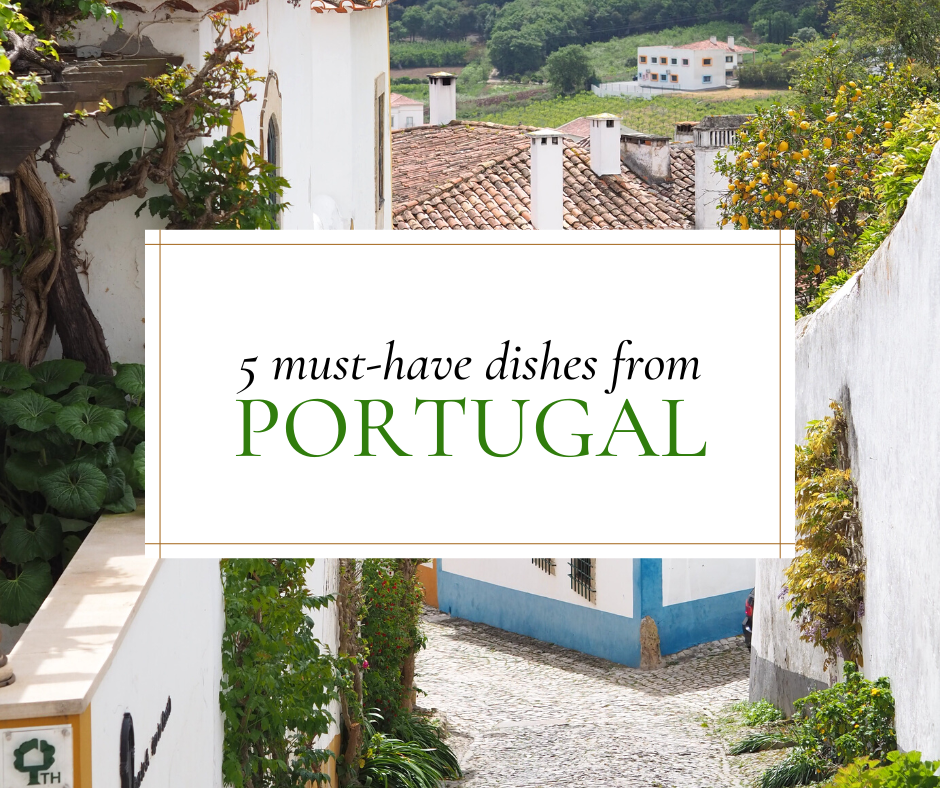

Portugal is a country in western Europe that’s home to the most stunning beaches! As you’ll see later in the article, many dishes in Portugal utilize seafood as they’re some of the freshest and tastiest around. What better way to spend the day than by sitting on the beach with a plate full of delectable seafood dishes?
Additionally, Portugal is known for its long and rich history. This means there are lots of things for you to see in Portugal including architecture, historical landmarks, museums, music, and other stunning dishes. You’ll never get bored in Portugal, so what are you waiting for? Plan your trip to Portugal now and make sure to sample their amazing dishes below!
1. Polvo a Lagareiro
This dish might look exotic and fancy, but it relies on only a few key ingredients. You have the meaty octopus that has been roasted until incredibly tender; sauce made of olive oil, garlic, and onions, which is a staple of Mediterranean cooking; roasted potatoes that melt in the mouth and provide some balance to the rich dish.
What’s more, the dish is so quick and easy to make! It shouldn’t take less than thirty minutes to cook, making it the perfect dish for late-night dinners or families with small children.
Polvo a Lagareiro is one of the most beloved dishes in Portugal. It is typically served during Christmas Eve celebrations, and there is even a small village called Santa Luzia that is called the “Octopus Capital” not just in Portugal but Europe overall!
2. Arroz de Marisco
What better way to take advantage of all the seafood Portugal has to offer with one of the tastiest dishes around? Arroz de marisco is sort of like a unique mix of Spanish paella and Italian risotto. Here, rice is stewed with a ton of fresh seafood like monkfish, bacalhau, shrimp, crabs, and whatever else your seafood-loving heart desires. The resulting sauce is very sweet and salty, making every spoonful a world of flavor.
If you want the best version of this dish, coastal Portugal is where you want to go. Every day, fishermen head out to catch a ton of fresh seafood, so you know you’re getting seafood straight from the sea and onto your plate. This dish is so high in demand that it was named one of the seven wonders of Portuguese gastronomy by Sete Maravilhas de Portugal, an organization funded by the Ministry of Culture.
3. Sardinhas Assadas
When thinking of dishes in Portugal, this iconic seafood dish will most likely have been at the forefront of your mind. This fish dish is so popular in the country that you can get a whiff of them everywhere you go, especially if you’re in Lisbon and the surrounding areas.
They symbolize the start of the summer season. This is when the fish are at their fattest and tastiest. Though they’re available all year round, you want to take advantage of the summer season as sardines in colder weather aren’t as good.
And the beauty of sardinhas assadas is in its simplicity. There’s nothing hoity-toity here. The sardines are generously seasoned with coarse salt before being put on the grill. Once cooked, it’s served with a side of cornbread, or perhaps bell pepper salad and boiled potatoes.
4. Francesinha
Francesinha in Portuguese means “Little Frances”, though this dish is very, very far from little. It’s so filling and heavy on the tummy that you can probably go a whole day without eating anything else! It is the pride and joy of the Portuguese city Porto. It’s not uncommon to find drunk people eating this dish to ward off hangovers. Be careful not to eat too much of it though—this is a whopper for your heart!
This is a sandwich that has been stuffed with every meat you can possibly imagine: cured ham, sausage, steak, roast beef, anything! Then, it’s topped with a fried egg and melted cheese. And, if you think that’s not enough, it’s topped with a steaming gravy of hot tomato and beer and served with a side of French fries.
This is definitely one of Portugal’s guiltiest pleasures.
5. Pastel de Nata
Pastel de nata was invented in the 18th century, surprisingly, by Catholic monks at the Hieronymites Monastery! According to their records, they frequently used egg whites to starch clothes for the friars and nuns. They then used the leftover yolks to create delicious pastries including pastel de nata! While the recipe has since been sold to a neighboring bakery, the recipe is still top-secret and highly protected.
The dessert itself consists of a creamy, milky egg custard that’s been encased in a flaky crust. It’s baked in the oven until the tops are nice and caramelized. It’s then sprinkled with a light dusting of cinnamon and sugar.




